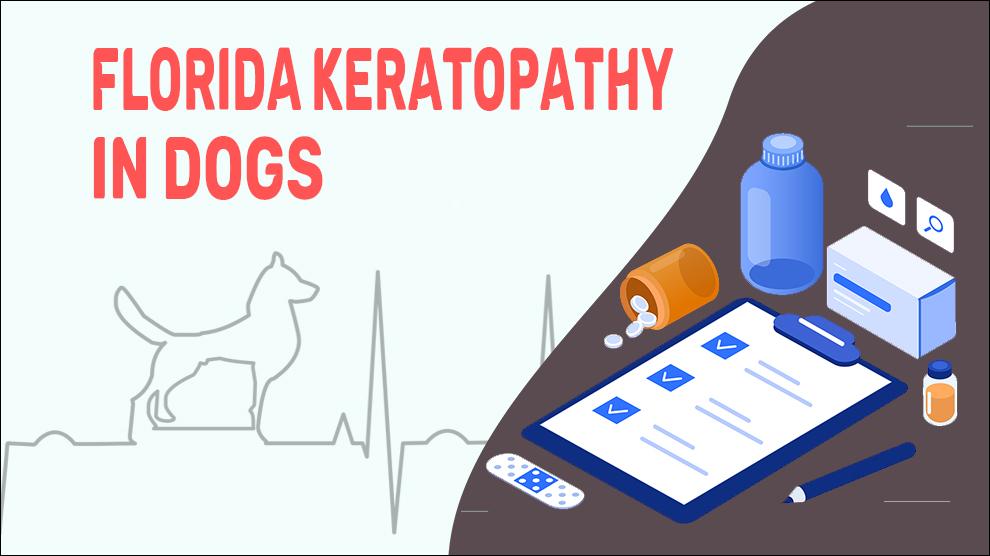What Is Florida Keratopathy In Dogs?
Florida keratopathy (also called Florida spots) in the dog is due to White or gray spots within the stromal layer of the cornea. Florida keratopathy is prevalent among pets in the southeastern part of America. Outside of the USA, it is limited to tropics and subtropics where is called tropical keratopathy.
First identified in southern Florida and so the name. Tropical keratopathy spots are mostly located at the center and they will be of carrying sizes from 2 to 8 millimeters. This is considered to be a cosmetic condition and there are no other documented symptoms as of now.
The etiology of Florida keratopathy is poorly understood. The most accepted theories are the spots are due to mycobacterium infection or little fire ant bites (LFA) but this is not yet confirmed.
Actually, most dogs seem unfazed by Florida keratopathy at all. You may find this when you look into the dog’s eyes or perhaps, it is easier to find out when looking at the eye from sideways.
Clinical Signs Of Florida Keratopathy In Dogs
Gray or white spots in cornea
Treatment Options For Florida Keratopathy In Dogs
There is nothing to lose sleep over about your pet’s keratopathy. There are lots of other things to ponder over.
It's an absolutely cosmetic issue that may or may not heal eventually. Even if healing doesn’t happen, Florida keratopathy doesn’t seem to cause any undesirable health conditions on its own.
So, if you have noticed that your dog’s eyes are becoming a little hazy or cloudy, but the vision seems normal, you almost certainly have nothing to worry about.
Next time when you visit the vet, just ask him to perform an eye exam to check the possibility of other eye defects.
If there is an infection or inflammation, Anti-inflammatory medications, Antibiotics and Pain Control Medications such as NSAIDs will be used.
Home Remedies For Florida Keratopathy In Dogs
- Gently washing the eyelids using baby shampoo and/or applying warm compresses to the eyes can help discharge the oil in the tear glands.
- Pet eye lubricating gels are another option (best to apply at night or before bedtime).
- Supplementing for healthy eyes- help your dog have healthy ocular hygiene with supplements.
- Make your dog more comfortable: Cleanse eyelids—to remove crusts (dried discharge) with lukewarm water with a half-teaspoon of salt.
- Use physiological saline or a commercial eye cleansing agent: (such as Eye Scrub) or lactated Ringer’s solution.
How To Prevent Florida Keratopathy In Dogs?
Check your dog on a regular basis and consult your veterinarian immediately if you find any odd changes in eye color associated with a dark film across them.
Affected Dog Breeds Of Florida Keratopathy
There is no breed disposition.
Causes And Diagnosis For Florida Keratopathy In Dogs
1. Causes:
- The causing factors are not yet confirmed
- Mycobacterium or little fire ant (Wasmannia auropunctata)
2. Morbidity:
Florida keratopathy is rare in dogs. Incidence is documented only in the southeastern United States, tropical and subtropical regions.
3. Mortality:
There is no mortality due to this condition documented yet.
4. Diagnosis:
- Tonometry, slit lamp, and fundoscopy
- Inner eye gonioscopy
- Biomicroscope
- Conjunctival cytology or biopsy
- Intraocular pressure testing
5. Prognosis:
Florida keratopathy isn't a lethal condition and there are no confirmed details about its pathogenesis. Discuss with your vet to figure out any other eye-related conditions.
When To See A Vet For Florida Keratopathy In Dogs?
Contact your vet right away, if you notice any of the following:
- If your dog blinks excessively or the eyes look painful and red continuously
- Watery discharge/ Excessive tearing
Food Suggestions For Florida Keratopathy In Dogs
The diet should be included foods containing vitamins A, and C, omega-3 fatty acids, zinc, carotenoids, beta-carotene, lycopene, glutathione, phytonutrients—and the special partnership of zeaxanthin and lutein (natural sunblock).
- Pick seafood over the usual beef and chicken.
- Omega-3 oily fishes such as salmon, tuna, cod, etc.
- Leafy greens such as spinach, kale, watercress etc.
- Nonmeat/plant protein sources such as nuts, Lentils, Beans, Eggs, etc.
- Citrus fruits or juices.
- Sweet potatoes, tomatoes, pumpkin.
- Pork, tuna, Oysters.
- Blueberries, Broccoli, cabbage, carrots.
Conclusion
In the majority of dogs, treatment is not needed. However, as eyes are involved, it is better to get the suggestion of a veterinary ophthalmologist. Supportive therapies may be suggested, for example, food supplements can be helpful. Though it may not go away, but your dog’s quality of life cannot be impaired by this condition.

















